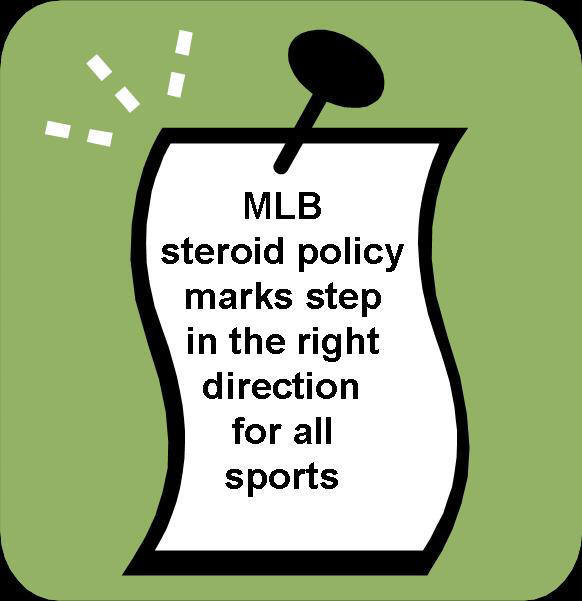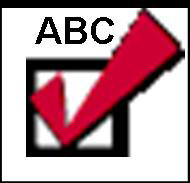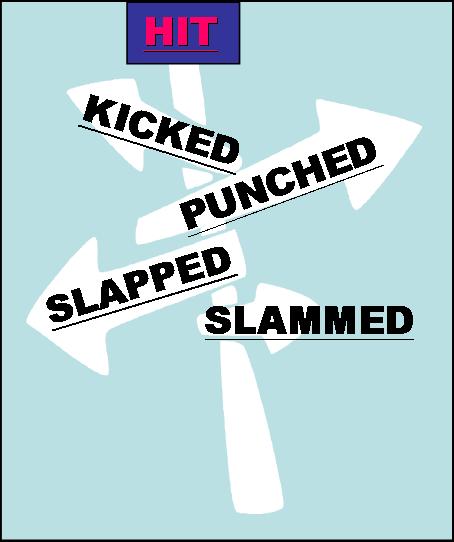THE
WRITING PROCESS
|
PREWRITING
3) FREEWRITING 5) OUTLINING 7) JOURNALS ________________ ESSAY BASICS
EDITING/PROOF-READING DOCUMENTATION LITERARY CRITICISM ________________ ________________ |
1) TOPIC: · What are you writing about? · Choose a subject or a category (baseball) that interests you, perhaps a hobby, recreation, or special talent you have. A subject is a large umbrella under which many topics reside. As such, it is too broad for a 300-500-word essay and must be broken down into several topics.
· Then narrow your focus within that subject until you locate a topic on which you can write a focused and detailed essay (Major League Baseball's new steroid policy). · If you have more information than can fit into a 3-4-page essay, then your topic is still too broad. Also, if you find yourself glossing over material without specifics or details, then your topic remains too broad.
· A focused and narrowed topic can be discussed fully, fairly, and descriptively within the confines of a relatively short essay.
2) MAIN IDEA: · What are you going to say about your topic? · What is your purpose? What is your point?
· What are going to prove? What message do you want to convey?
3) THESIS STATEMENT: · Now that you have a narrowed topic and a clear idea concerning what you are going to say about that topic, you can formulate a clear expression of your argument. A thesis statement is a strong declarative sentence that combines #1 & #2 with the support to prove the main idea. In a word, a thesis is a proposal of what you intend to prove in your essay.
· The formula for a proper thesis statement is as follows: TOPIC + MAIN IDEA + SUPPORT · The new Major League Baseball steroid policy (topic) marks a step in the right direction for sports (main idea) because of its clarity, its severity, and its fairness (support).
4) BRAINSTORM: · One of several prewriting techniques is called "brainstorming." · In this process, you set a time limit--something brief, say 2 minutes-- and brainstorm ideas on your topic as they come to you.
· To start, glance at the clock or your watch and mark the time. Give yourself 2-5 minutes, depending on the length of your assignment. · During this time, list as many ideas about your thesis as you can, but do not edit for spelling, punctuation, or worth. Write down words, phrases, fragments, whole clauses. Even if an idea is silly and one you will immediately eliminate, put it down on the paper, for the goal is to have something tangible you edit, rearrange, and expand upon. · To read more on brainstorming, follow this link.
5) ELIMINATE: · Next, take your brainstorming list and begin to edit it for content. · First, cross out all ideas on your list that do NOT support your thesis.
· If an idea is interesting but does not support your dominant impression, moral, or main idea, you must omit it. Either change your main idea or support the one you have chosen.
6) CHOOSE: · Take the previous list and circle the best 3-5 ideas (depending on the essay's length) on your list that support your thesis.
· Choose those ideas that best support your thesis--those that will help you persuade, convince, or illustrate. 7) ORGANIZE: · After you select the 3 best ideas, organize them into a logical order
· You can order them in terms of interest or importance. · The "EMPHATIC ORDER" suggests ordering your ideas from least to most important. In other words, save the best for last. Analogy: When you go to a concert, you do not want to hear the best song first, for the rest of the show would be a bummer! However, if the band slowly builds momentum, each song better than the previous one, and then finishes with the best song, wow, what a show! · So, remember: SAVE THE BEST FOR LAST.
9) OUTLINE: · An essay will have three main parts: the Introduction, the Body, and the Conclusion. · The purpose of an outline is to organize your essay in regard to its three main parts. Yet, an essay outline need not be too detailed; as long as you include the main ideas, the means of support, and some detail, yours will be a successful outline.
· For instance, place your generalization and thesis statement under the Introduction. Under the Body, place your support--in the proper order--and some details. Under the Conclusion, list your main ideas as well as a possible clincher sentence. · To read more on outlining, follow this link.
10) FREEWRITE: · Take the information from your brainstorming and outline and freewrite. · Freewriting is a timed prewriting technique that bridges the gap between the outline stages and the essay stages.
· For a 3-page paper, give yourself 5 minutes of writing time. Write in sentence-form as opposed to word- or phrase-form--this will look like an essay rather than a list. Beyond that, though, do not worry about spelling or punctuation or sentence structure--simply get sentences down on the page. · At the end of the 2 minutes, review what you have written, edit some ideas, omit others, and add still others. · To read more on freewriting, follow this link. 11) INTRODUCTION: · Often, the freewriting exercise leaves you with one very long paragraph--which is fine because you were not concerned with paragraph during that stage. Now you how the raw material to work with in the next phases of the writing process. · With your freewriting work nearby, begin to write an introductory paragraph. · The purpose of an Introduction is to create interest and to set up the direction of the essay: you want to "introduce" the topic to the reader. · To start, then, grab the reader's attention with a generalization, quote, quip, rhetorical question, or statistic regarding your topic.
· Then, moving towards your thesis statement, slowly narrow your field until your reach you, your topic, and your main idea concerning the topic. This deductive reasoning process can be illustrated as an inverted pyramid or as a funnel. · The introductory paragraph should conclude with a strong, clear thesis statement that details what topic you are writing about, what you will say regarding that topic, and how you will prove or support your position. The formula is as follows: topic + main idea + support. · To read more on writing introductory paragraphs, follow this link.
12) BODY: · With the thesis statement as your jumping off point, you next move to the Body of the essay; this is the crux of your assignment. Let me phrase as it a ratio from your SAT exams: the Introduction is to the movie preview as the Body is to the movie. · In the Body, you will support your thesis with ample evidence, proof, examples, description, detail.
· Each Body paragraph will focus on a SINGLE reason, detail, aspect, feature, type, or characteristic. · Properly organize this support. · Evidence can be arranged spatially or chronologically, in the emphatic order, or by the point-by-point method or subject-by-subject method.
13) CONCLUSION: · The Conclusion is quite similar to the Introduction, but please do not merely cut and paste the Introduction--rephrase and refer to it. For example, if you began the essay with a hypothetical situation, refer to it again in the Conclusion. In essence, bring the reader full-circle. · Reiterate your thesis and recapitulate the main ideas covered in the Body.
· In order to let the reader know the essay has come to an end, finish the essay with a clincher sentence: a strong final sentence to the signal end, to wrap it all up, to leave reader with point to ponder. For instance, if you wrote an essay extolling the virtues of your favorite musician, it would seem appropriate to end with a remark that embodies your eagerness for his or her next concert or next compact disc or your plan to listen to her or his disc on your drive home. · To read more on writing conclusions, follow this link.
14) Proofread: TOUCH ALL THE "BASES" · The "Four Bases" of writing include unity, coherence, support, and sentence skills. Proofread your rough drafts in terms of these.
o UNITY: all ideas support your thesis, nothing not on topic, nothing irrelevant, no tangents o COHERENCE: logical flow/structure of ideas (like the pan of a video camera), transitions (transitional expressions, conjunctive adverbs, like links in a chain) o SUPPORT: 3-legged table; relevant, unambiguous examples, details, descriptions, anecdotes, types o SENTENCE SKILLS: grammar (s-v/pronoun agreement), punctuation, fragment/RO/CS, word choice, mechanics (spelling, capitalization)
· "THE ON-DECK CIRCLE" and "THE DUGOUT": Before you even get up to home plate, you better have a clear understanding of the assignment--ask the teacher, ask a classmate, ask a tutor, read the textbook. So, when you step into the ON-DECK CIRCLE before you do any writing AND when you return to the DUGOUT after you have written a rough draft, you should have a firm grip on the T.O.E.--the type of essay you are writing. To ensure this, ask yourself the following questions during the prewriting stage:
Then, ask yourself these questions during the proofreading stage:
For example, if you are writing an Illustration essay, make sure you have included specific, unambiguous, and relevant examples to support your thesis and that you have emphatically organized these examples, saving the most dynamic or interesting for last. · To read more on proofreading, follow this link.
15) PROOFREADING TECHNIQUES: · To proofread for sentence errors, here are some tips:
16) Proofread: CHECK YOUR SPELLING · Please realize that the red squiggly lines under certain words are not Bill Gates' way of adding color to your essay; instead, they are warnings that you have possibly misspelled word. · To be sure of the correct spelling, consult a dictionary--a hard copy or an online version, such as http://www.dictionary.com. · Also, use the computer’s spellchecker with a dictionary!
· Despite the convenience of these programs, they are not flawless, so please realize the limits of spellcheckers; follow this link for more detail on this subject.
17) Proofread: CORRECT YOUR DICTION · The rules of FORMAL ACADEMIC WRITING differ from those of ordinary speech, text-messaging, e-mailing, fiction writing, or journalism; therefore, you must obey the edicts of not only proper grammar and mechanics, but also those of writing etiquette--specifically diction, or word choice.
· Choose concrete and descriptive words (vivid adjectives, adverbs, verbs or similes and metaphors). · Capitalize "I" and spell out "you are" or "your." · NO contractions (not "can't" but "cannot"). · NO abbreviations (not "CD" but "compact disc"). · NO slang words, clichés, pat expressions, vulgarities. · NO “you”
18) Proofread: TRANSITIONS · To build coherence, begin to make connections between ideas and sentences. · Consult the list of transitions above by following this link. · List conjunctive adverbs (thus, therefore, furthermore) and transitional expressions (for example/instance, on the other hand, on the contrary).
· These transitions will link sentences as well as paragraphs.
19) REWRITE & PROOFREAD: AGAIN and AGAIN · Correct the errors in grammar, spelling, punctuation, diction, organization. · Proofread after each draft; go through the entire process again.
· Have someone else, such as a TUTOR or PEER EDITOR, read your essay. · Put it away for awhile and then come back to it with fresh eyes. · After several drafts, submit a polished final draft.
20) REWRITE AFTER GRADING: · When your instructor returns to you your graded essay, note the comments s/he made regarding rhetorical, stylistic, grammatical, and mechanical errors. · Ask her or him for clarification on any points you may not fully understand. · Go over the essay with the instructor and/or a tutor.
· Consult your grammar handbook: read the rules and complete the exercises on the topics mentioned by the instructor. · Finally, implement the suggested changes. Even if you are not allowed to rewrite and resubmit the essay for a higher grade, you will still learn from your mistakes, you will improve your writing aptitude, and you will increase your chances of receiving progressively better grades on the subsequent essays.
|






















